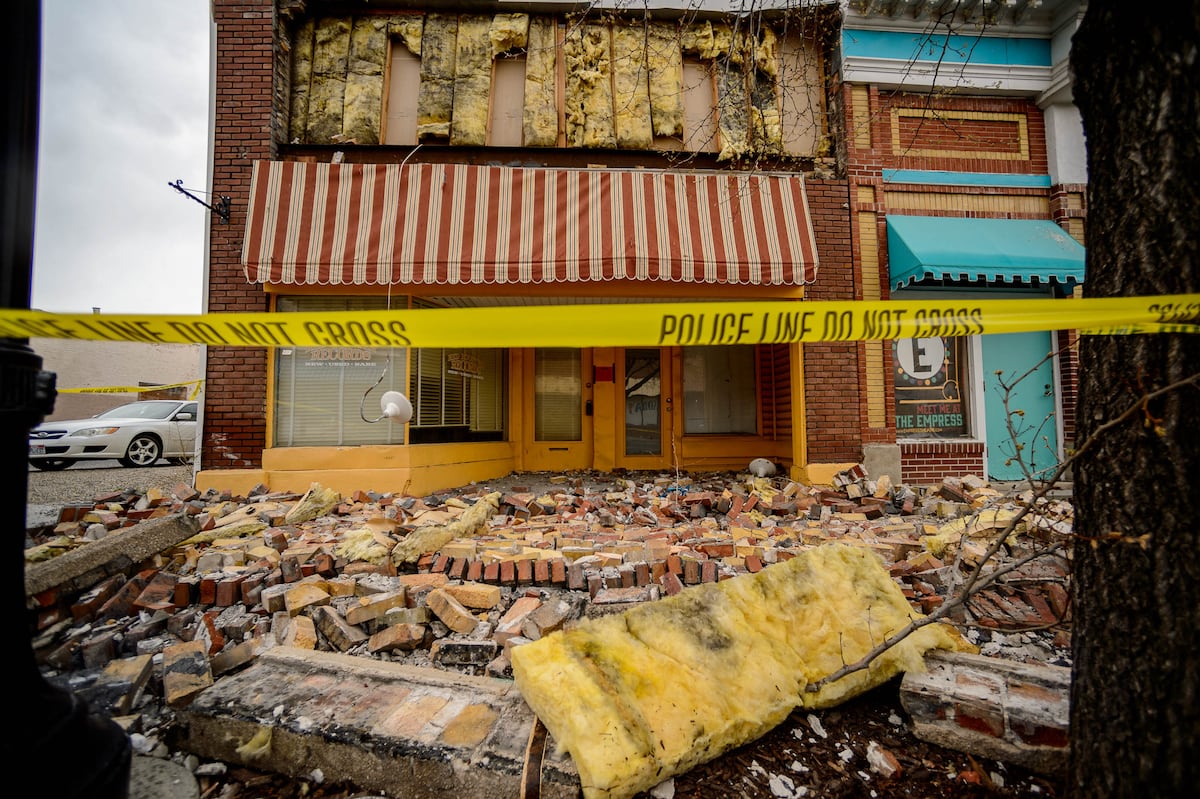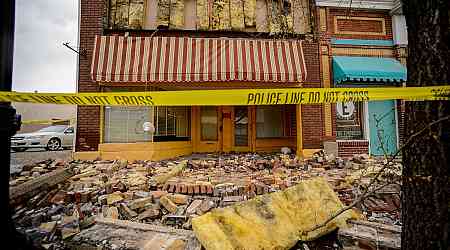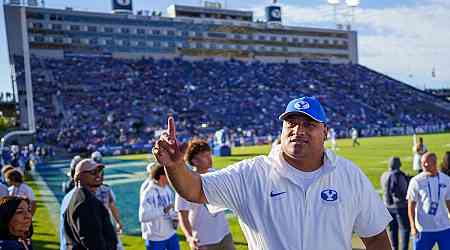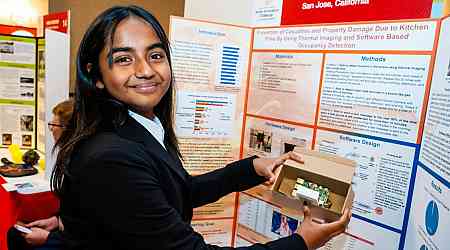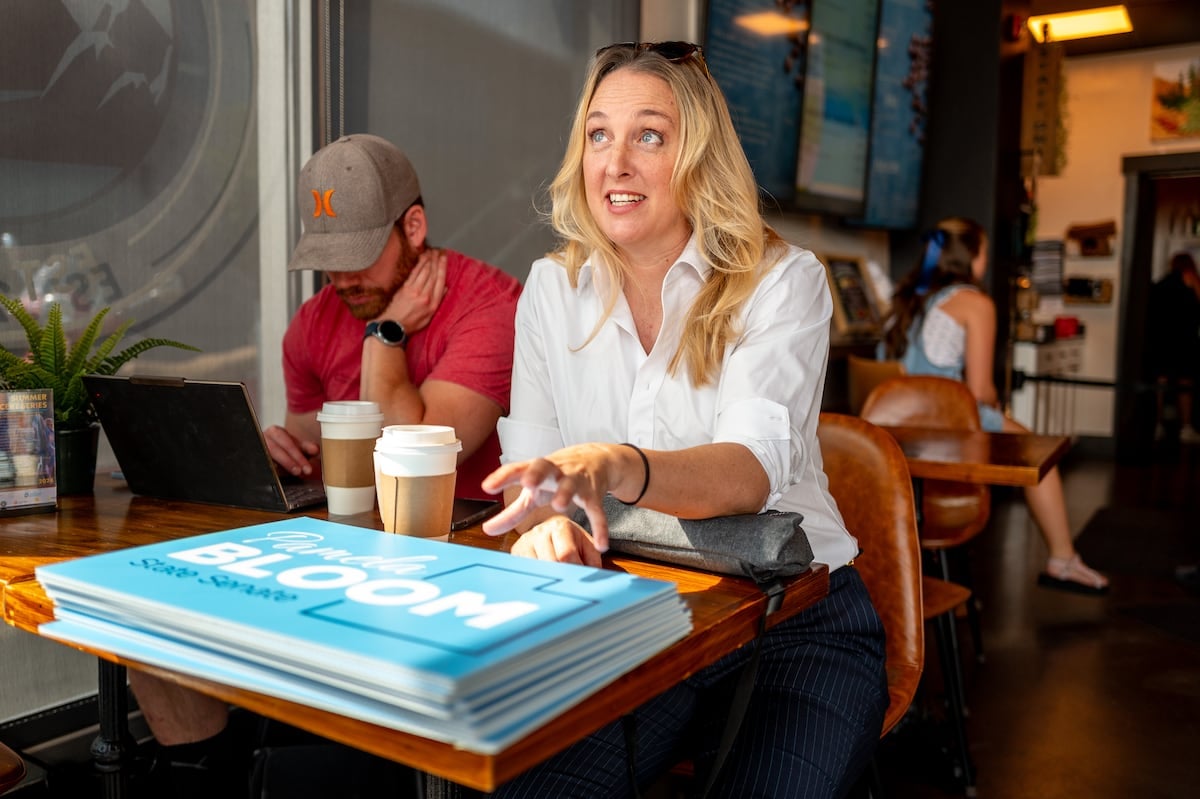What could be Utah’s deadliest disaster is about a coin toss away within 50 years.
That’s roughly the probability that hundreds of thousands of Utahns could suddenly be without shelter and water supplies for months.
Experts say the Salt Lake Valley’s segment of the Wasatch fault is at an acute juncture in a recurring 1,400-year geologic cycle of massive earthquakes. Seismic predictors point to a matter of when — not if — that temblor will arrive.
The Big One — a magnitude 6.75 earthquake with appalling destructive power to crumble homes, schools and vital infrastructure across the valley — could carry a short-term economic toll of at least $75 billion.
Around half of the thousands of quake-related deaths predicted by worst-case models stemmed from severe damage to the region’s more than 140,000 unreinforced masonry buildings, many of which are homes built before the 1970s.
These risks are well-known in Utah’s halls of government, education and emergency planning, as highlighted by the yearly Great Utah Shakeout, a state-backed awareness drill. Its guiding slogan: “Be Ready Utah.”
“Utah is NOT prepared for a major Wasatch fault earthquake,” said a 2015 report from the Earthquake Engineering Research Institute, a national nonprofit centered on seismic resilience.
For nearly three decades, the state Seismic Safety Commission — a group of scientists, structural engineers, architects, government officials and other stakeholders — has worked to improve earthquake readiness.
Yet, in their most recent session, state lawmakers on Capitol Hill voted to “sunset” the commission, giving no formal explanation and with little debate.
“This vote confuses me,” Sen. Kathleen Riebe, D-Cottonwood Heights, said at the time. “Why wouldn’t you want to protect the people in the state of Utah?”
Commission members are set to meet Thursday to begin unwinding the panel’s work.

‘A big loss’
Originally tasked by state lawmakers in 1994 to identify earthquake hazards and ways to mitigate them, the Seismic Safety Commission has been a steady augur on both risks and safety.
Panelists have worked closely with academics on modeling what a massive Wasatch Front temblor might look like, including the possibilities of landslides, major surface ruptures and damage due to soil liquefaction.
Its major recommendations over the years include calls for revising building safety standards and retrofitting schools; creating an earthquake early-warning system; and upgrading facilities like hospitals along with utility and transportation grids to keep them operational in a major quake.
The commission also sought federal grants to upgrade the University of Utah’s Marriott Library, and advocated to make the region’s system of drinking water aqueducts more resilient.
“We were really doing what our mandate was from that original statute,” said Keith Koper, director of the seismological observatory at the U. and former commission chair. “I felt like people took it pretty seriously.”
Members say the panel is the lone venue for seismic experts and professionals across industries to game-plan and recommend safety policy.
With the commission now ceasing to exist, Jessica Chappell, its current vice chair, added that Utah was giving up “the one place where experts in the state come together to share ideas and information.”
“I see it,” Chappell said, “as a big loss.”
Risky bricks
Some worry that without the commission’s work, Utahns — from residents in old brick homes to city officials in charge of building codes — won’t continue preparing for what could be one of the nation’s worst-ever natural disasters.
“One of the things we say as seismologists is, ‘Earthquakes don’t kill people,” Koper said. “Buildings kill people.”
The Beehive State’s housing stock, in particular, is heavy with unreinforced masonry structures — typically made of brick without reinforced steel, leaving them highly susceptible to damage from shaking.
“Utah is unique among the most highly seismic states of the United States, in that it has many single-family dwellings of unreinforced masonry construction,” states a 2009 report from Federal Emergency Management Agency.
These vulnerabilities are not limited to homes. At least 130 school campuses serving more than 70,000 students in the state likely have unreinforced masonry — a fact highlighted in several commission reports, along with recommendations for structural upgrades.
The 5.7 magnitude Magna earthquake in 2020 damaged West Lake STEM Junior High so severely it was deemed unsafe to enter. The ceiling of Cyprus High School fell in. Students and staffers would have been injured or killed had they been in school at the time, the seismic commission concluded in a 2024 report.
A magnitude 7 earthquake, meanwhile, would release nearly 100 times more energy than the Magna quake and, according to the commission’s studies, “be far more devastating to the many schools with similar vulnerabilities.”

Inconvenient truths?
There also are clues that its ongoing work identifying seismic hazards in Utah’s schools may have also put the commission in political crosshairs.
In a hearing on Capitol Hill, Sen. Lincoln Fillmore, R-South Jordan, said the panel “would recommend things that are unaffordable to do.”
“It put the state in a position of having a public record saying, ‘Hey, here are problems’ and ‘Hello everyone, we do not have the funding to address that problem,’ ” Fillmore added. That, he said, “creates some additional liability that we don’t need to accept.”
Structural engineer and former commission chair Barry Welliver said in recent years it may have become “a thorn in the side of the Legislature, which doesn’t like to hear that we should be spending money on making schools safer.”
“They mandate the kids be in school,” Welliver said, “and they take no risk, so to speak. They say, ‘It’s up to you.’ ”
In a March 28 commission meeting, members wondered out loud whether shifting their focus away from vulnerable public buildings might make lawmakers more amenable to extending the commission’s tenure.
Schools, a leading member said, were “probably a big political hot-button issue.”
“Honestly we probably would have taken a different tack on schools if we had been more fully advised of what was going on,” said the commission’s current chair, Robert Grow.
Grow did not respond to several requests for comment before publication of this story.

Welcome to ‘tent city’
During the 2024 legislative session, Sen. David Hinkins, R-Ferron, sponsored a bill to extend the commission’s life for another five years.
He said in an interview he wasn’t exactly sure why the measure died so suddenly when it reached the Senate floor. As legislator after legislator voted in opposition, Hinkins cheekily offered a brief invitation.
“I have a lot of nice farmland I could turn into a tent city,” Hinkins told colleagues, “I just want you to know you’re more than welcome to come down to Emery County and set up camp. If it ever happens — we hope it doesn’t — but if it does, you’re sure more than welcome.”
With that, HB47 then died on a Senate vote of 18-10, with Hinkins on the losing side. The same session on Capitol Hill saw a push to sunset hundreds of state commissions currently on the books, some of which lawmakers say were doing little.
Hinkins said he suspected some legislators did not understand the seismic commission’s work.
Whatever the case, he said, “The people in the Wasatch Front aren’t concerned about it. I sure as hell am not going to be.”
The commission effectively costs taxpayers little, with volunteer experts working with a handful of state employees drawn from relevant agencies.
Welliver said the Legislature’s decision blindsided him.
“We were wary of the fact that we could lose status at some point,” Welliver said, “but we didn’t see that one coming.”

Future risks
Several commission members said they hoped the panel’s work would somehow continue.
While Utah’s current projections on the impacts of the Big One are grim, state experts say they currently lack up-to-date data on its likely effects.
The Magna quake brought new information to light on the region’s fault lines, according to Divya Chandrasekhar, a member of the commission and an associate professor at the U.’s City & Metropolitan Planning Department.
Before lawmakers’ vote to sunset the commission, its experts were seeking funding to model new damage scenarios in order to provide “more fine-grained information that cities can actually act on,” Chandrasekhar explained. “Now we don’t know how to proceed, because there’s only one entity that could undertake something like this, and that is this commission.”
That has led her and others to be concerned about keeping the need for seismic disaster planning in the public view.
“Probably one of the biggest risks we face in our built environment and our economy,” Chandrasekhar said, “is an earthquake.”
function onSignUp() { const token = grecaptcha.getResponse(); if (!token) { alert("Please verify the reCAPTCHA!"); } else { axios .post( "https://8c0ug47jei.execute-api.us-east-1.amazonaws.com/dev/newsletter/checkCaptcha", { token, env: "PROD", } ) .then(({ data: { message } }) => { console.log(message); if (message === "Human

















